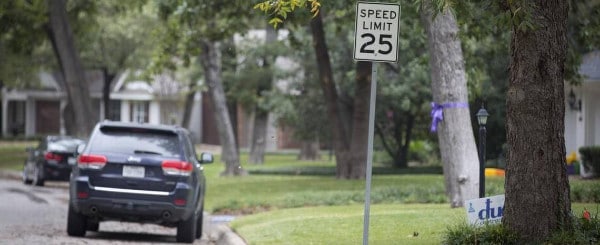By Bryant Ficek, PE, PTOE
How much impact does the speed limit have on a local, residential road? That basic question has increasingly become a hot-button issue in Minnesota where these roads are usually 30 mph by state statute. Several cities and bicycle/pedestrian advocates are pushing to change the statute and lower the local speed limit to 25 mph. At 25 mph, the roads should be safer for bicyclists and pedestrians. If anyone is unfortunately struck by a car, the chances of survival greatly increase if the car is traveling at a slower speed. This increase in safety is a good reason to advocate for slower speeds. However, getting back to our initial question, we wondered whether simply changing the rule in the book or a posted sign will really impact speeds.
As we often do, we created a research project to attempt to answer this question. Luckily, our neighbor to the east, Wisconsin, has 25 mph as their base for local residential roads. With the similarities between our two states, it seemed natural that we could compare vehicle speeds on local roads with the two different speed limits.
To help us in the effort, we worked with the Cities of Woodbury Minnesota and River Falls Wisconsin to obtain speed data. Thanks to Tony Kutzke (Woodbury) and Reid Wronski (River Falls) for their help in providing the speed data and working with us on this research.
The goal for this quick review was simple – compare the speeds on the local roads for each city by roadway width. Our initial thinking and past experience suggested the width of the local road mattered more than the actual speed limit. In other words, drivers will travel to the condition and characteristics of the road more than what a posted sign tells them.
We are reviewing the speed data provided and found the following draft results:
As shown, the average 85th percentile speeds are relatively close between the two cities. In general, the speeds for both corridors increase as the road width increases. Although, the 25-mph roads have a slower rate of increase. Also, most local roads are typically narrower, roughly 32-feet wide or less, where the results between the two sets of data are similar.
So to rephrase our question – does the speed limit of the road matter? At this point, our answer is a decisive “maybe” due primarily to an admittedly small sample of data from only two cities. The small size could also mean the data is susceptible to factors like enforcement, surrounding geometry (horizontal or vertical curves), landscaping, and parking to name a few potential concerns.
We are continuing to review the data and will be providing a white paper on the results soon.
The post What Difference Does a Sign Make? appeared first on .



